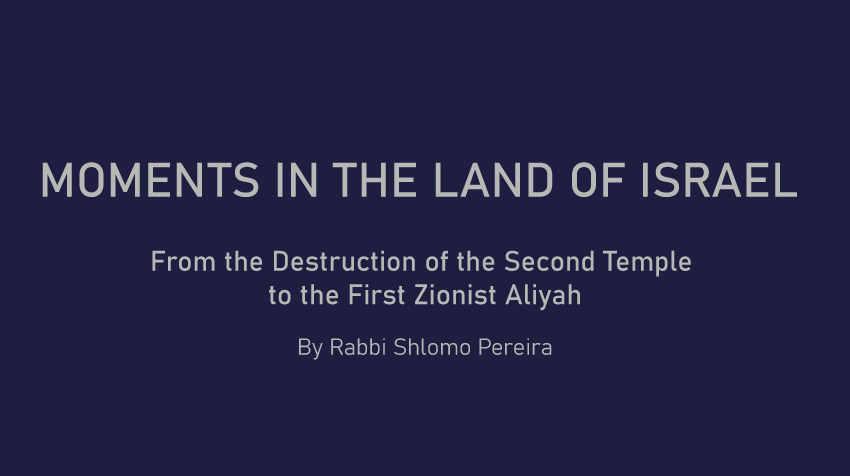Highlighting the permanent Jewish presence and the relevance of Jewish contributions in Eretz Israel as well as the continuous connection between Diaspora Jews and Eretz Israel throughout the centuries between the Destruction of the Second Temple and the onset of modern Zionism, through a series of one-page notes distributed weekly.
DID YOU KNOW THAT... c. 190 CE, the sages in Galilee under the leadership of R. Yehuda HaNasi completed the compilation of the Mishnah? The Mishnah is a set of 63 tractates, organized in six parts called ‘Sedarim’, or Orders. It contains 525 chapters and 4,224 rulings each of which is referred to individually as a mishnah [with lower case] The Mishnah represents the first formal, comprehensive, and public written rendition of the Oral Law. It records civil, criminal, and religious rulings, reflecting the traditions, understandings, and decisions, of the best minds of the Jewish people over a period of about 600 years from the time of the destruction of the First Temple and the Men of the Great Assembly to the time of the completions of its compilation. Revelation at Mt. Sinai is traditionally understood in Judaism in dual terms of a Written Law and an Oral Law. The Written Law, i.e., the Torah, was revealed at Mt. Sinai in its full, complete, and immutable written form. In turn, the Oral Law refers to the oral, dynamic and evolving component of the Jewish jurisprudence originating with the revelation at Mt. Sinai. As the name suggests, the Oral Law was intended to be transmitted orally in order to preserve its dynamics. Until then, there was a whole array of partial and private records of legal rulings but no public or comprehensive written records. The decision to commit the Oral Law into writing was as a last resort decision. It reflected the existential threat the Jewish people faced in the aftermath of the destruction of the Second Temple, and with it of the Great Sanhedrin, and the utter devastation that followed the defeat of the successive revolts that took place over the next century. The process of compiling the information and organizing it into a coherent body took several generations of sages painstakingly sifting through a myriad of documents. Consistent with the nature of the Oral Law, dissenting views were often recorded together with the actual rulings.


































